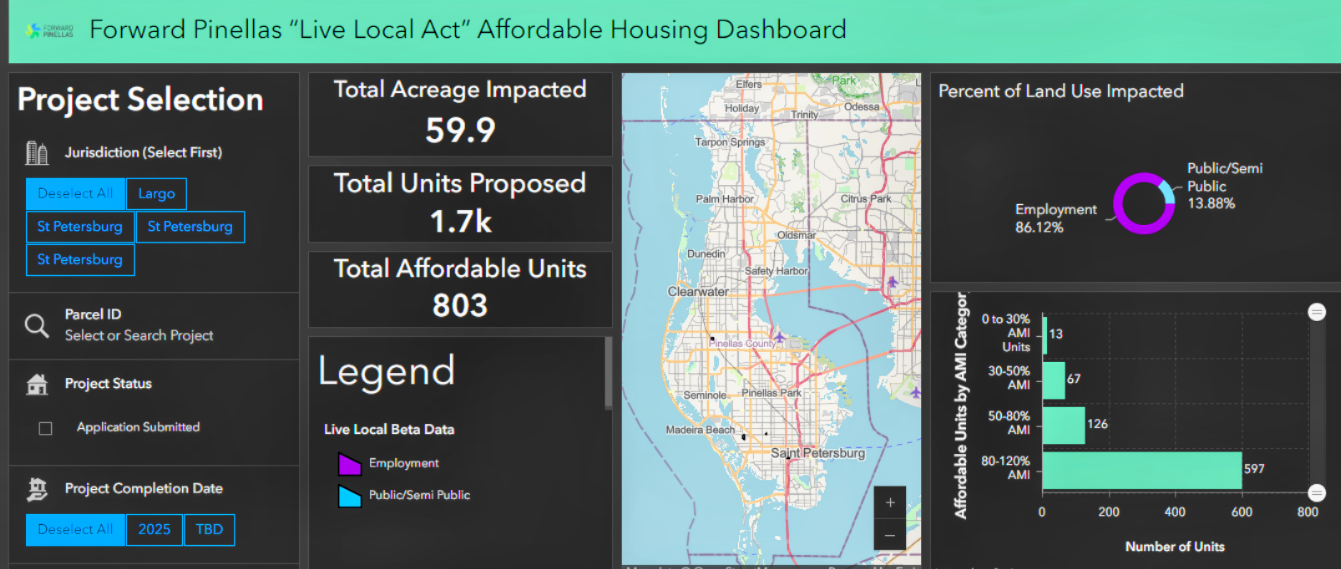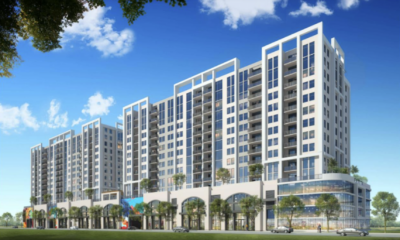Know
Does ‘Live Local’ foster affordability or eliminate job sites?

Pinellas County residents, governments and development stakeholders have a new tool to track the Live Local Act’s success – or lack thereof – at mitigating the area’s affordable housing crisis.
The recently launched “Live Local Affordable Housing Dashboard” is the brainchild of Jared Austin, principal planner and project manager at Forward Pinellas. He, program planner Emma Wennick and their organization’s information technology team built the groundbreaking platform in-house.
The dashboard also includes projects created under legislation that preceded Live Local – House Bill 1339 and Senate Bill 962. Perhaps most importantly, it allows users to view a development’s total units according to affordability rates.
“We could be losing industrial lands to two units that are not really what I would consider affordable,” Austin told the Catalyst. “We’re (Pinellas County) the most densely urbanized county in the State of Florida, so we don’t have a lot of land, period.”
A lack of developable property means local officials must efficiently accommodate growth. Senate Bill 102 (Live Local) preempts county and city plans and zoning regulations.
Local governments must abide by the legislation’s provisions. It allows developers to create residential and mixed-use projects on industrial or commercial land if at least 40% of units are “affordable” for 30 years.
That includes workforce housing for residents earning up to 120% of the area median income (AMI), or $104,280 annually for a family of four in St. Petersburg. Monthly rents for a two-bedroom apartment created under Live Local could reach $2,149 in Pinellas County.
“It’s a statewide policy, but many counties have different needs,” Austin said. “So, having a kind of one-size-fits-all approach can be a challenge. That’s one of the reasons why we did the dashboard … so we have ample data.”

In April 2022, St. Petersburg’s City Council approved a proposal to transform a lumber yard into affordable housing under HB1339. It has yet to break ground. Rendering: HP Capital Group.
Forward Pinellas completed a target employment study in January. Available industrial land was a focus, as Austin said the county has the state’s second-largest manufacturing industry.
Lawmakers passed, and subsequently tweaked, Live Local during that evaluation period. Austin said the platform allows stakeholders to track the legislation’s impact on land that could help provide much-needed jobs.
In addition, he said it highlights the number of new units created and “if it’s actually impacting affordability.” Austin also noted that manufacturing jobs typically offer relatively high wages with little educational requirements.
“So, that helps curb affordability, in many respects, for a lot of our population,” he said. “By contrast, we are facing a severe affordability crisis, and legislation like this is aimed at tackling that.”
The dashboard shows Live Local and preceding legislation has impacted 60 acres in densely developed Pinellas County – with most in St. Petersburg. The projects will provide 1,700 total units, with 803 considered affordable.
However, 597 are for people earning 80% to 120% of the AMI. At those limits, monthly rent for a two-bedroom apartment would fall between $1,566 and $2,349.
Another 126 are for households earning 50% to 80% of the AMI, or $43,450 to $69,500 for a family of four in St. Petersburg. Monthly rents for a two-bedroom would start at around $978.
The dashboard lists over 86% of the land as potential employment sites. Officials deemed less than 14% as “public/semipublic.”
The platform shows 1,400 proposed units, with 668 considered affordable, encompassing 44.3 acres in St. Petersburg. Officials approved the three projects under Live Local’s preceding legislation.
Over 69% of those affordable units fall between 80% to 120% AMI calculations. Austin noted the importance of those metrics, which also include density allowances.
“The Tampa Bay region has a deficit at that 80% and lower (rate),” he said. “Whereas at 120%, it’s not quite so much.”
“The only way we’re going to get a lot more units is if we’re building up and doing higher density development,” Austin added. “That is one thing I think stuff like the Live Local act can be useful for – but there’s challenges with it.”

The dashboard highlights the Fairfield Avenue Apartments project’s data. Screengrab.
Austin said the dashboard team workshopped the idea with their municipal partners. The goal was to include the most pertinent information, and St. Petersburg officials were “very appreciative.”
Austin, whose Ph.D. research at the University of South Florida centers on the Live Local Act, explained the city’s frustrations with the legislation. He noted that municipal leaders already established a similar process that accounted for environmental sensitivity and other unique aspects.
The Live Local Act overrides a “really thought out” system. Austin said city staff were particularly interested in the AMI breakdowns because “it really is the test” to show if the preemptive legislation is “actually bringing to market the thing that it’s meant to solve.”
He said Forward Pinellas similarly sought to implement innovative land use policies that allow relocating companies to build adjoining workforce housing. Austin called that a “win-win” situation now preempted by the Live Local Act.
“I hope state representatives are able to take the data and use it accordingly to get legislation that’s right for their communities,” Austin said. “But it’s ultimately up to them, and every county is different.”







